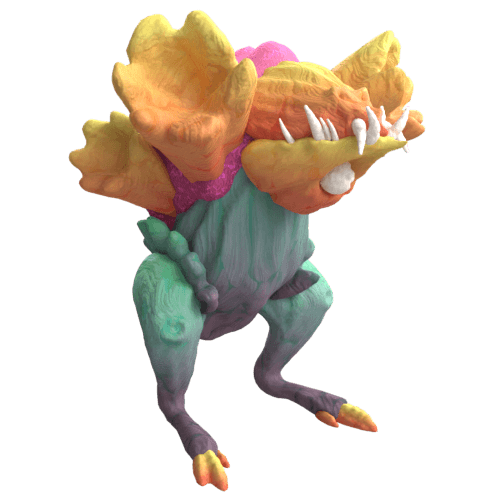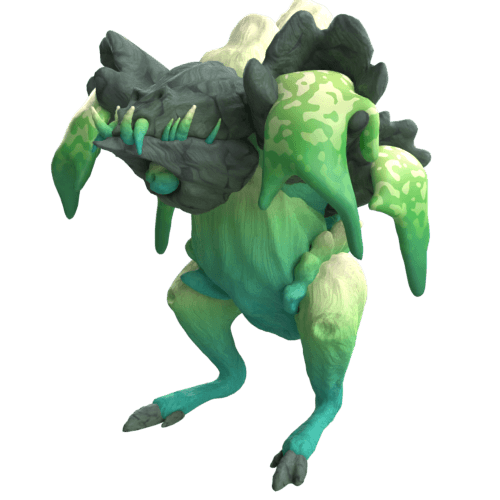Harebark
CID S-13
Subspecies Gallery

Beautiful Gas
Cotton Everhues CID SS-29
Odor
- Primary
- Fr
- Hint
- Ha
- De
- Ge
- Chirality
- Temperament
- Aggressive
This subspecies releases a thin colorful gas that’s still as effective.

Sap Spitter
Milky Mangrove CID SS-30
Odor
- Primary
- Im
- Hint
- Mu
- De
- Ha
- Chirality
- Temperament
- Aggressive
Venomous sap oozes from its horns in addition to the thick gas it’s able to produce.
Species Data
Classification
Genus: Hare Horn
Planet: Diverging Forest
- Average Size
- 132 x 138 x 155 cm
- Trophic Level
- Predator
- Habitat
- Terrestrial
- Favorite Treat
- Marrow Stew
- Nasal Cycle
- Right
Observations
A fierce, hopping, predator that belches a paralyzing gas from its horns. Once their target is stunned, the harebark uses its sharp teeth to tear into their prey’s flesh. I hypothesize that the gas is a vaporized form of the creature’s own digestive fluids. Their only weakness is that their eyesight is obscured when chomping, a tactic I’ve used many times to escape.